Department News
|
The Keiiti Aki Early Career Award is presented annually to an outstanding early career seismologist in recognition of their scientific accomplishments in the field of seismology. The award, which was established in 2008, honors the life and work of Keiiti Aki, a Japanese seismologist who developed a way to measure the strength of earthquakes. Successful nominees must have received their Ph.D. or highest equivalent terminal degree within six years of when the award year begins. For more information, please click here. |
|
NASA Mars 2020 Perseverance NASA's Mars 2020 Perseverance Rover is heading to the Red Planet to search for signs of ancient life, collect samples for future return to Earth and help pave the way for human exploration. Professor Joel Hurowitz is the deputy principal investigator for one of the instruments aboard, PIXL, an X-ray fluorescence spectrometer, which is attached to the end of the arm of the rover and is designed to examine the chemical makeup of rocks on Mars. Professor Scott McLennan worked on the science team of PIXL and another rover instrument, SuperCam, a Laser Micro-Imager, which uses laser to identify the makeup of rocks and soil. The rover is set to land at Mars' Jezero Crater on Feb. 18, 2021. For more information on Mars 2020, visit: https://www.nasa.gov/perseverance and https://mars.nasa.gov/perseverance |
|
Turkana Basin Institute - Geology Field Camp Stony Brook University offers a four-week long geology field camp in the Turkana Basin
of Kenya. During this field camp you will visit renowned fossil localities where stratigraphic
sections and mapping projects can be tied into these records. The program will be
based at the Turkana Basin Institute (TBI) facility on the Turkwel River near the
town of Lodwar. We will examine modern fluvial and lacustrine processes and relate
them to the strata filling this active extensional basin. In addition to mapping and
stratigraphic column projects, students will visit locations with igneous rocks, both
on the Central Island within Lake Turkana, and within an area where columnar basalts
are found in archeological sites. |
|
Department of Geosciences undergraduate student, Alexander Kling, is one of only 496 students from across the United States, selected to receive a Goldwater Scholarship for the 2019-20 academic year. The Goldwater Scholarship Program, one of the oldest and most prestigious national scholarships in the natural sciences, engineering and mathematics in the United States, seeks to identify and support college sophomores and juniors who show exceptional promise of becoming this Nation’s next generation of research leaders in these fields. Congratulations Alex! For more information, please click here. |
|
Stony Brook Department of Geosciences Involved in Study that Refutes Claim Regarding Oldest Evidence of Life on Earth Department of Geosciences Assistant Professor Joel Hurowitz co-authored a study recently published in the journal Nature that refutes claims to have found evidence for microbial life in the Earth's oldest rocks, found in Greenland. The earlier study, also published in Nature in 2016 by University of Wollongong's Allen Nutman at co-authors, hypothesized that triangular features they found in 3.8 billion year old metamorphosed sedimentary rocks were "stromatolites" - laminated structures formed by microbial communities. If true, this claim would push the start of the Earth's fossil record back by 200 million years, to a time when the Earth's surface presented a far more hostile environment to life. Our more recent investigation of the outcrops containing these putative stromatolites, led by the NASA-Jet Propulsion Laboratory's Abigail Allwood, revealed them to be the products of tectonic deformation, masquerading as fossilized microbial mats. This study re-establishes the 3.5 billion year old Strelley Pool stromatolites as the oldest widely accepted evidence for life on Earth, and reveals the scientific process at work: extraordinary hypotheses require meticulous investigation, and do not always hold up under scutiny. NPR's Nell Greenfieldboyce discusses the study with Allwood and Hurowitz here: |
|
Department Researchers Team with Astrobotic Technology to Prepare for Future Lunar Exploration Researchers in the Department of Geosciences, working as part of the RIS4E node of NASA's Solar System Exploration Research Virtual Institute (SSERVI) have, for the last 4 years, been conducting field analog activities in Hawaii and New Mexico to test new technologies that would allow future astronauts to conduct in situ scientific measurements and select the most scientifically important samples for return to Earth. On the latest expedition to New Mexico, RIS4E researchers were joined by a team from Astrobotic Technology, who used the rugged volcanic terrain, pits, and subsurface lava tubes to test autonomous drone flight software that they are developing. The two teams plan to partner again in the future to further demonstrate how humans and robots can safely and effectively explore the Moon in the near future. More information can be found at SBU News. |
|
Interim Dean Nicole Sampson has announced the addition of new Associate Deans to the CAS Leadership Team. Among them is Geosciences Professor Tim Glotch, who brings extensive experience managing large multi-investigator research grants and projects. Congratulations Tim! |
|
Yang Gao awarded an AMNH Lerner-Gray Grant for Marine Research Geosciences graduate student, Yang Gao, was awarded an American Museum of Natural History Lerner-Gray Grant. This is a seed research grant to support field based research for early career researchers proposing to conduct research in systematics, evolution, ecology, zoology or paleontology of marine life and environments. |
|
Congratulations to the Class of 2018! |
|
Renee Schofield awarded GSO Jerrold L. Stein Student Life Award for Emerging Leadership Stony Brook Graduate Student Organization has awarded Renee Schofield their Emerging Leader Award for her exceptional effort and involvement as our Geosciences Senator. The Jerrold L. Stein Student Life Awards for Excellence in Student Leadership and Campus Involvement is an annual celebration of the exceptional students, organizations, and advisors at Stony Brook University. Congratulations Renee! |
|
Students across the college were asked to nominate professors who demonstrate not only excellence in teaching, but a warmth of spirit and true caring for students in and out of the classroom. Over 180 nominations were received and the recipients were decided by the Student Advisory Council. Many exceptional faculty were nominated and Greg was one of only five chosen. Congratulations Greg! |
|
Thanks to the generosity of an Using a new tool called Optically Stimulated Luminescence (OSL), which can determine when sediments were last exposed to sunlight, LADS will allow Stony Brook faculty and students researchers to date specific subsurface layers of Long Island. The information gained through this process will provide new insight into geological and environmental questions that would otherwise be impossible to answer. “LADS will help provide a better understanding of how Long Island was formed by glaciers and sediments associated with them and how it responds to climate change,” said Dan M. Davis, Professor and Chair of the Department of Geosciences. More information can be found at Stony Brook Matters. |
|
Stony Brook Geosciences going The newest member of the Geosciences faculty, Dr. Weisen Shen, will arrive in Stony
Brook for the start of the spring 2018 semester. Dr. Shen comes to us from Washington
University in St. Louis where he has been a postdoctoral research associate since
completing his Ph.D. in geophysics at the University of Colorado, Boulder. |
|
Richard J. Reeder appointed as Vice President for Research and Operations Manager Stony Brook University President Samuel L. Stanley Jr., MD has announced that he is appointing Richard J. Reeder as Vice President for Research and Operations Manager for the Research Foundation at Stony Brook University. In this role, he will oversee the Stony Brook research enterprise. Rich joined Stony Brook's Geosciences Department in 1980 as a faculty member. More information can be found at the OVPR Website. |
|
|
|
The State University of New York Board of Trustees named seven faculty members from Stony Brook University as Distinguished Faculty, SUNY’s highest honor. Among those named as Distinguished Professors was Scott McLennan. The Distinguished Professorship is given to individuals who have achieved national or international prominence and a distinguished reputation within a chosen field. This distinction is attained through significant contributions to the research literature or through artistic performance or achievement in the case of the arts. The candidate’s work must be of such character that the individual’s presence will tend to elevate the standards of scholarship of colleagues both within and beyond these persons’ academic fields. Congratulations Scott! Additional details can be found at SBU Happenings. |
|
Barbara Cohen (B.S., Geology, 1993) was recently named Associate Principal Investigator for the Mars Exploration Rover (Opportunity) mission. She has been on the science team for that mission since 2005 but is now taking on one of the mission’s leadership roles. Barbara, who went from Stony Brook to the University of Arizona for her PhD, leads the planetary science group at the Marshall Space Flight Center in Huntsville, AL. She is also on the science team of the Mars Science Laboratory (Curiosity rover), is Principal Investigator for the upcoming Lunar Flashlight mission (2018) and has had an asteroid named in her honor (6816Barbcohen). If you want to read more about Barbara’s career, go to: http://planetary.msfc.nasa.gov/Barbara.html |
|
Geosciences PhD student, Melissa Sims, recently presented her thesis to the Research
Foundation Board of Directors during their recent visit to Brookhaven National Laboratory.
Melissa's presentation made such an impression, that she was invited to introduce
U.S. Secretary of Energy, Ernest Moniz, at the dedication of the National Synchotron
Light Source (NSLS-II) at BNL. Further details are provided at the SBU Graduate School News page and the BNL Newsroom. |
|
On October 3, 2014, the Department of Geosciences hosted 'Bobtoberfest', a celebration of Bob Liebermann's career, achievements, and lasting influence on succeeding generations of geoscientists. The events honoring Bob, who retired at the start of the current academic year, were attended by faculty, staff, students and researchers from Geosciences and the Mineral Physics Institute. We were especially pleased that Bob's wife Barbara and their three children were able to take part, along with two generations of his academic 'children' (former and current students, as well as others he has mentored over the years). We are pleased to present here a selection of presentations and other memorabilia from that event. |
|
On July 31, 2014, NASA announced the selection of scientific instruments for the Mars 2020 rover. Among the instruments selected was the Planetary Instrument for X-Ray LPithochemistry (PIXL), for which Joel Hurowitz, a newly appointed Assistant Professor, is Deputy Principal Investigator. The instrument will be built at the Jet Propulsion Laboratory in Pasadena, CA and Professor Hurowitz expects the PIXL project to enable cutting edge training for the next generation of planetary scientists at Stony Brook. Further details are provided at the University's News page. |
|
Sara Zhao has won a Stephen E. Dwornik Planetary Geoscience Student Paper Award for her poster "Photochemical influences on bromine and chlorine geochemistry on the Martian surface" delivered at the 45th Lunar and Planetary Science Conference in March of this year. The Dwornik Award, offered by the Planetary Geology Division of GSA, is considered one of the most prestigious student awards in the planetary sciences. |
|
Professor Glotch has been selected to lead one of nine research teams participating in the Solar System Exploration Research Virtual Institute (SSERVI) that will bring researchers together in a virtual setting to focus on questions concerning space science and human space exploration. Further details are provided at the University's News page. |
|
Professor Schoonen has been named Chairman of the Environmental Sciences Department (ESD) at BNL effective June 1, 2013. An interdisciplinary scientist, Martin Schoonen has also served in several administrative positions at Stony Brook, developed large-scale, multidisciplinary proposals and leading multidisciplinary research programs. He will maintain his affiliation with Stony Brook, working under a joint SBU/BNL appointment.
|
|
Professors John Parise and Artem Oganov received a major grant from NSF aimed to accelerate the transition from discovery to application for high pressure materials. The collaboration includes Professor Alexander Orlov, Materials Science. |
|
Professor Deanne Rogers is part of the team that reported findings in Nature Geoscience supporting the past existence of groundwater on Mars. These results represent some of the strongest evidence that Mars could have supported life in the past. |
|
Distinguished Service Professor Robert C. Liebermann received the American Geophysical Union’s Edward A Flinn Award at the Society’s Fall 2012 meeting in San Francisco. This prestigious award recognizes individuals “who personify the Union’s motto ‘unselfish cooperation in research’ through their facilitating, coordinating, and implementing activities.” Highly deserving of this recognition, Bob Liebermann’s long and distinguished research career has benefitted the international mineral physics community in countless ways. As a co-director of the Center for High-Pressure Research (CHiPR) at Stony Brook, Liebermann helped to introduce the new large-volume high-pressure technology developed in Japan to the United States. An entire generation of researchers using this new technology was trained through CHiPR at Stony Brook. Bob later served as President of the Consortium for Materials Properties Research in Earth Sciences (COMPRES), shortly after it was formed by the NSF. Under his energetic leadership as President of COMPRES from 2003-2010, Bob oversaw a roughly threefold increase in the size of the organization. He also enabled the successful operation of synchrotron beamlines for Earth sciences research, providing much needed infrastructure for the high-pressure community. During his long and highly productive career as a Professor at Stony Brook University, Bob has been especially supportive of students, young researchers, and research groups from across the world. Bob also made community-based resources available that would not have otherwise existed, and organized educational outreach opportunities to open up new research opportunities to the broadest possible audience. The Department is delighted to count Bob as one of our long-time faculty. |
|
Geosciences Professor Scott McLennan has been selected by NASA as a Participating Scientist for the Mars Science Laboratory rover mission. The MSL rover, Curiosity, is scheduled to land on August 5, 2012 in Gale Crater on Mars to begin a two-year primary mission exploring ancient sedimentary deposits to help determine if Mars was ever able to support life. During the first three months of the landed mission, Professor McLennan will be at the Jet Propulsion Laboratory in Pasadena, CA, where the science and engineering team will operate the rover on “Mars time”. The 900 kilogram Curiosity rover is much larger and more capable than the very successful Mars Exploration Rover twins Spirit and Opportunity that landed on Mars in 2004. Professor McLennan has been a member of the Mars Exploration Rover science team since 2002 and was also a participating scientist on the Mars Odyssey orbiter’s gamma-ray spectrometer experiment. |
|
Associate Professor Tim Glotch was selected to receive the National Science Foundation’s most prestigious award for young faculty, the CAREER award. The award comes with a five-year grant totaling nearly one-half million dollars. The project, “Fundamental Measurements of Mineral Optical Properties and Theoretical Treatment of Light Scattering at Infrared Wavelengths,” will provide an experimental foundation for Dr. Glotch’s research focused on analyzing the mineral types on the surfaces of Mars and the Moon. |
|
Francis McCubbin (PhD ‘09) was named one of 96 recipients of the Presidential Early Career Award for Scientists and Engineers. This award represents "the highest honor bestowed by the United States Government on science and engineering professionals in the early stages of their independent research careers." Francis is currently Senior Staff Scientist at the Institute of Meteoritics and Research Assistant Professor at the University of New Mexico. At Stony Brook, Francis worked with Prof. Hanna Nekvasil on water in lunar apatites. |
|
Geochemist Scott McLennan is a member of the team that recently reported new findings from the Mars Rover ‘Opportunity’ demonstrating that a site in the Endeavour Crater on Mars shows evidence to support the past existence of liquid water. The findings were reported in the May 4, 2012, issue of Science. Scott has been a member of the Mars Rover science team since its inception in 2004. The latest findings follow other reports showing that water existed in Mars’ past.
|
|
Geosciences postdoctoral fellow Dr. Attreyee Ghosh and Prof. William Holt have devised a numerical model describing the tectonic forces responsible for earthquakes. Their research findings were published in the Feb. 17, 2012, issue of the journal Science. The model points to improvements for long-term forecasting of earthquakes. Detailed reports of their findings are presented by Science Daily and Our Amazing Planet. http://www.ouramazingplanet.com/2459-plate-tectonics-computer-models.html |
|
The American Geophysical Union has announced that the 2011 Inge Lehmann Medal will
be awarded to Stony Brook University's Donald J. Weidner, Ph.D., a distinguished professor
in the Department of Geosciences. Awarded once every two years, the medal recognizes
"outstanding contributions to the understanding of the structure, composition, and
dynamics of the Earth's mantle and core." |
|
Iron-bearing minerals can disinfect drinking water; that is the conclusion of research
conducted by Geosciences graduate student Lonia Friedlander. Lonia, working in collaboration
with Professor Martin Schoonen in the Department of Geosciences and Professors David
Thanassi and Wali Karzai and graduate student Neha Puri in the Center for Infectious
Diseases at Stony Brook University, showed that adding pyrite to water containing
E. coli leads to the rapid elimination of the bacteria. |
|
Professor Dan Davis of the Geosciences Department at SBU and Guy Consolmagno, S.J., of the Vatican Observatory will release the 4th Edition of "Turn Left at Orion", published by Cambridge University Press. This new edition revisits the sky with a Dobsonian telescope.
|
|
Research findings of Stony Brook PhD Francis McCubbin and his faculty advisor, Prof.
Hanna Nekvasil, show that the mineral apatite in lunar rocks contains hundreds to
thousands of parts per million H2O in its structure. These results demonstrate that
the Moon's interior contained significantly more water than previously thought, likely
dating back to its origin. These novel findings are forcing planetary scientists to
re-evaluate the long-held view of the Moon as a dry body and to develop a new paradigm
for lunar formation and evolution. The findings were published in the prestigious
journal Proceedings of the National Academy of Sciences in June 2010. |
|
In spring 2010 Jerome joined the Vibrational Spectroscopy Laboratory of Prof. Timothy Glotch, and in April had amassed enough data to present a poster, "Thermal emission spectroscopy of volcanic rocks from Mauna Iki, Hawaii" at the annual campus-wide URECA poster symposium (April 2011). This summer, Jerome's research on infrared emissivity spectra of rock samples is supported by URECA. Using spectral deconvolution models to analyze the data and determine the mineralogy of volcanic rock samples from Hawaii, Jerome is now comparing laboratory and remote sensing data to further our understanding of the role of alteration coatings on the samples, and more generally, our understanding of the reliability of remotely acquired infrared spectra. |
|
'Rarely does one find a book which truly examines in detail the subject of comparative planetology. This is just such a book. ... an excellent starting point to delve deeper into the specific subject. ... In summary this is a unique book, addressing for the first time the subject of planetary crusts from a comparative point of view in a clear and thorough manner; I recommend it to students and specialists alike.' Planetary and Space Science 'In conclusion, Planetary Crusts: Their Composition, Origin and Evolution is a well-written and researched book that would complement the library of any crustal scientist, graduate-level student studying planets, or a person curious as to how planets and their crusts came about.' The Meteoritical Society '... a comprehensive description and insightful discussion of virtually all salient aspects of the formation and the evolution of planets and their interiors.' Nature Geoscience |
|
Using data from the Diviner Lunar Radiometer, an instrument uniquely capable of identifying common lunar silicate minerals, scientists at Stony Brook University in New York and NASA's Jet Propulsion Laboratory have found previously unseen compositional differences in the crustal highlands of the Moon, and have confirmed the presence of anomalously silica-rich material in five distinct regions. "In layman's terms, we have discovered a new and fundamentally different type of rock on the Moon," declares Dr. Timothy Glotch, assistant professor in the Department of Geosciences at Stony Brook and lead author of one of two papers on the research in this week's issue of Science. "For decades, we've recognized that these spots in the crustal highlands of the Moon are different. Now we have the evidence. The Moon is more geologically complex than previously thought, and we now have to refine our ideas about its formation." Every mineral, and therefore every rock, absorbs and emits energy with a unique spectral signature that can be measured to reveal its identity. For the first time, the Diviner Lunar Radiometer is providing scientists with global, high-resolution infrared maps of the Moon, which are enabling them to make a definitive identification of silicates commonly found within its crust. |
|
John Parise, Professor in the Departments of Geosciences and Chemistry, has been appointed to the rank of Distinguished Professor by the State University of New York. Parise was one of six SUNY professors approved for appointment to Distinguished Professor, one of the highest rankings bestowed by SUNY and Stony Brook’s highest faculty designation. Parise’s research during the past 28 years, has earned him the highest level of international prominence within the closely linked communities of crystallography, mineral physics, and solid state chemistry. His success in continually raising the standards of research has garnered him key leadership positions in community-wide development of new experimental facilities, most notably at the Spallation Neutron Source at Oak Ridge National Laboratory; at the joint Photon Science Institute, sponsored by New York State and Brookhaven National Laboratory (BNL); and at the National Synchrotron Light Source II, now under construction at BNL. “I am honored to be awarded this distinction,” said Parise. “This designation is profound, and I invite the many students and post-docs who have been my collaborators, and my many colleagues on joint grants from the Department of Chemistry and Brookhaven National Laboratory, to share in this honor.” |
|
When Katherine was given the opportunity to start doing research in 2009, after taking a remote sensing class with Professor Deanne Rogers, she immediately volunteered. And so, for the past year, Katherine has been working with her mentor, Professor Deanne Rogers, on a project that involves "Characterizing Vegetation Abundance Trends during 2000-2009 in the Long Island Pine Barrens using Remote Sensing and Meteorological Station Data"— a project that draws heavily on visual interpretation as well as data analysis. The investigation uses the Moderate Resolution Imaging System (MODIS) sensor aboard the Earth Observing System Terra satellite to obtain the Normalized Difference Vegetation Index (NDVI), an estimate of vegetation canopy density and health for the region. The analysis showed a negative correlation between vegetation abundance and nighttime surface temperatures. This past April, Katherine presented her findings on the project at the Long Island Geosciences Conference, as well as at the on-campus URECA Celebration. This summer, Katherine will continue her work with Prof. Rogers on the Long Island Pine Barrens vegetation abundance project, with support from URECA: she will be expanding on the previous work she started last summer by examining a longer time scale, enhancing the precision of variables, and incorporating other factors which affect NDVI data |

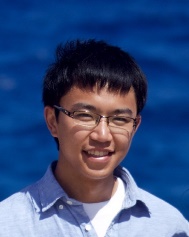 Weisen Shen awarded The Keiiti Aki Early Career Award by AGU
Weisen Shen awarded The Keiiti Aki Early Career Award by AGU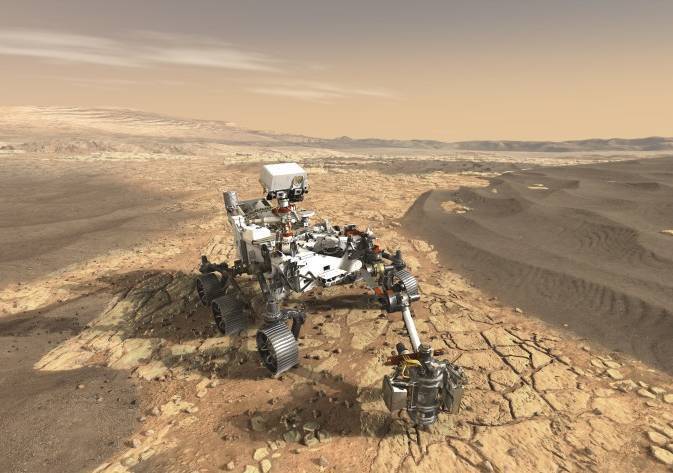
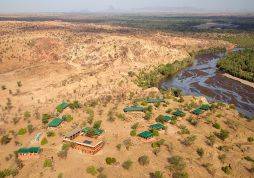
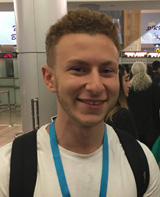 Alexander Kling awarded the prestigious Barry Goldwater Scholarship
Alexander Kling awarded the prestigious Barry Goldwater Scholarship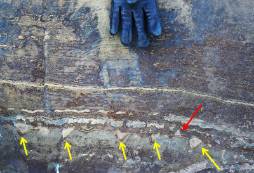

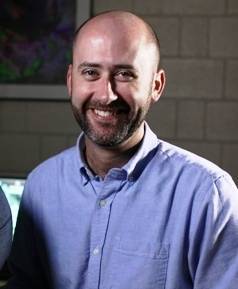 Professor Tim Glotch has been named Associate Dean for Operations and Facilities in
the College of Arts and Sciences
Professor Tim Glotch has been named Associate Dean for Operations and Facilities in
the College of Arts and Sciences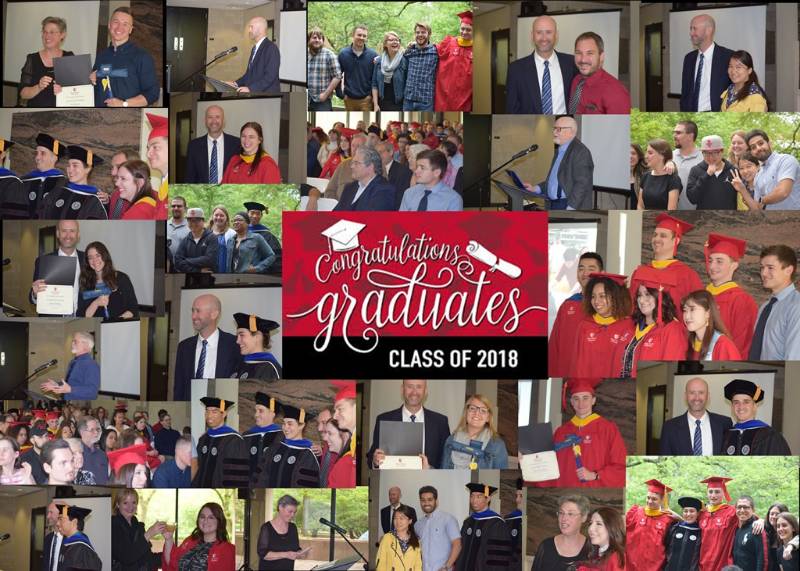
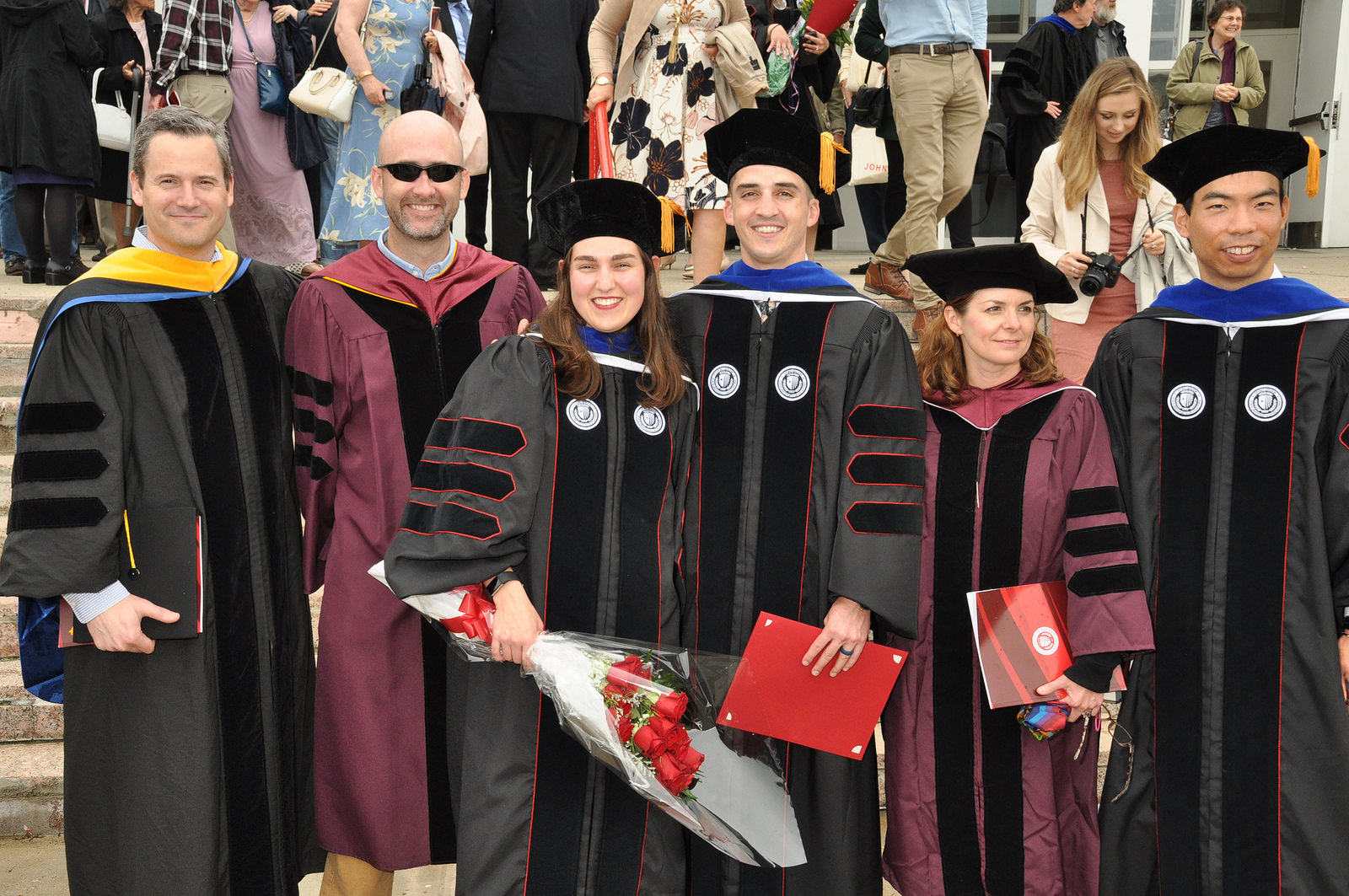
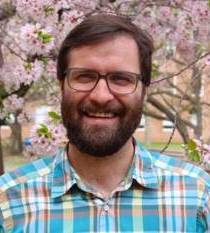 Greg Henkes awarded College of Arts and Sciences Godfrey Teaching Award
Greg Henkes awarded College of Arts and Sciences Godfrey Teaching Award 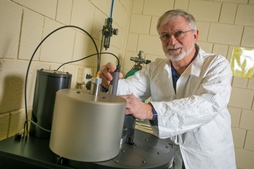 anonymous donor, the department has established a Laboratory for the Analysis and
Dating of Sediments (LADS).
anonymous donor, the department has established a Laboratory for the Analysis and
Dating of Sediments (LADS). 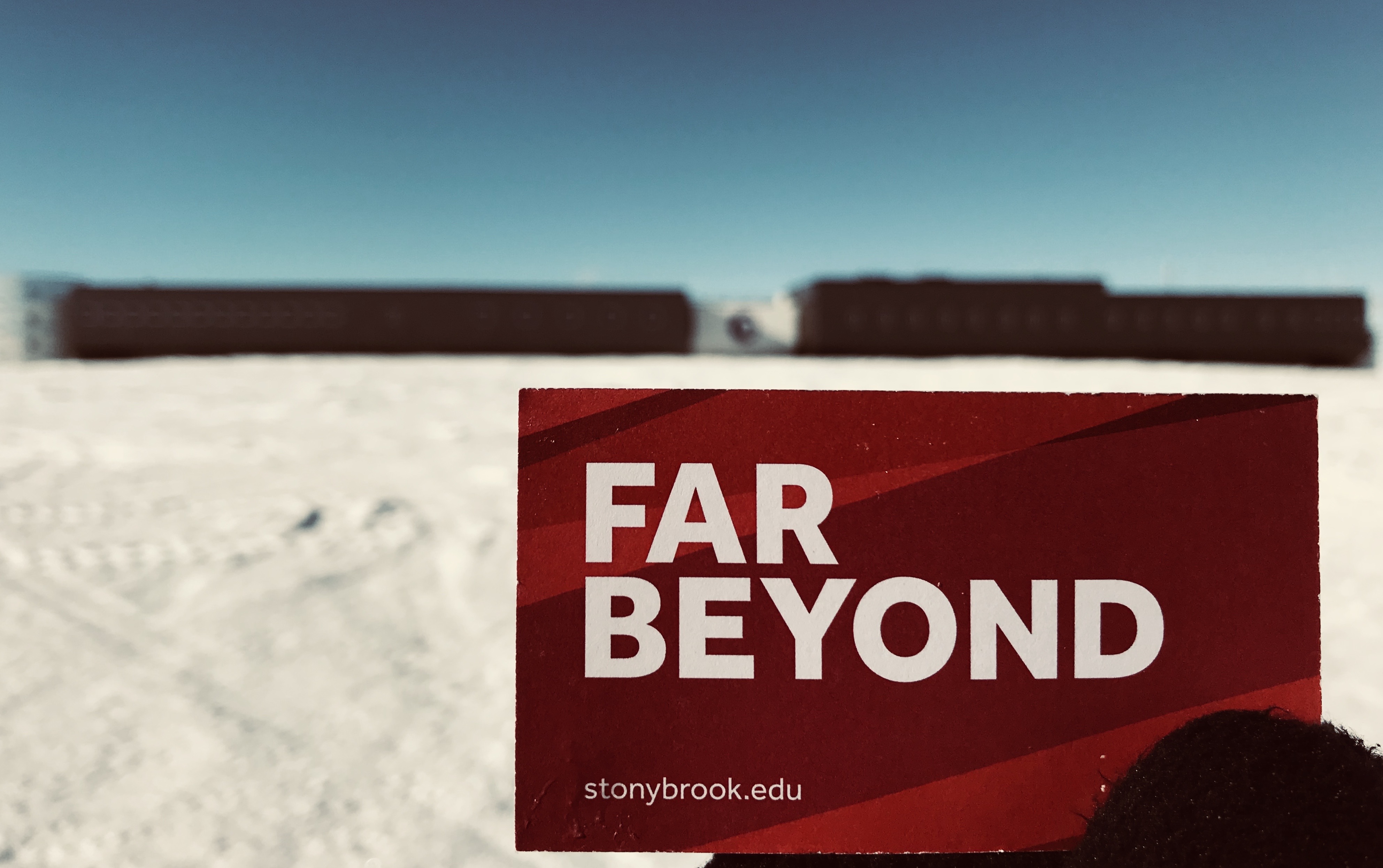 Far Beyond: Newest faculty member Weisen Shen's seismological research takes him to
the South Pole.
Far Beyond: Newest faculty member Weisen Shen's seismological research takes him to
the South Pole.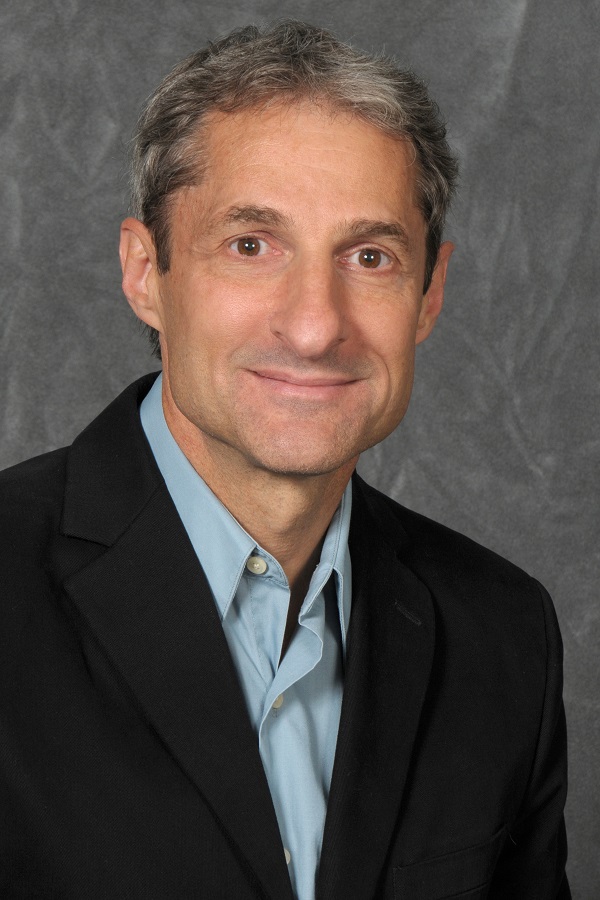
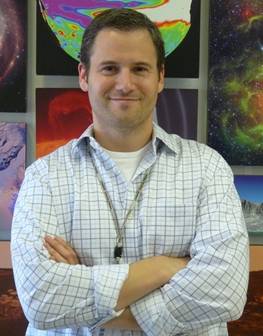 Mars Rover reveals ancient lake with properties common to those on Earth
Mars Rover reveals ancient lake with properties common to those on Earth Scott McLennan named Distinguished Professor
Scott McLennan named Distinguished Professor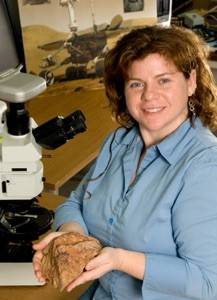 Barbara Cohen has been named to leadership position for Mars Exploration Rovers
Barbara Cohen has been named to leadership position for Mars Exploration Rovers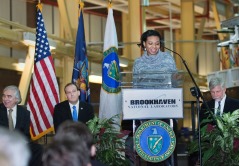 Melissa Sims chosen to Introduce U.S. Secretary of Energy at NSLS-II Dedication
Melissa Sims chosen to Introduce U.S. Secretary of Energy at NSLS-II Dedication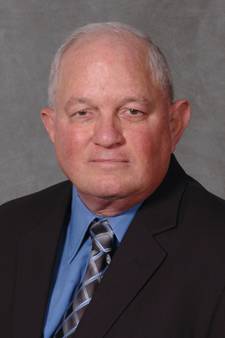 Celebrating Robert Cooper Liebermann
Celebrating Robert Cooper Liebermann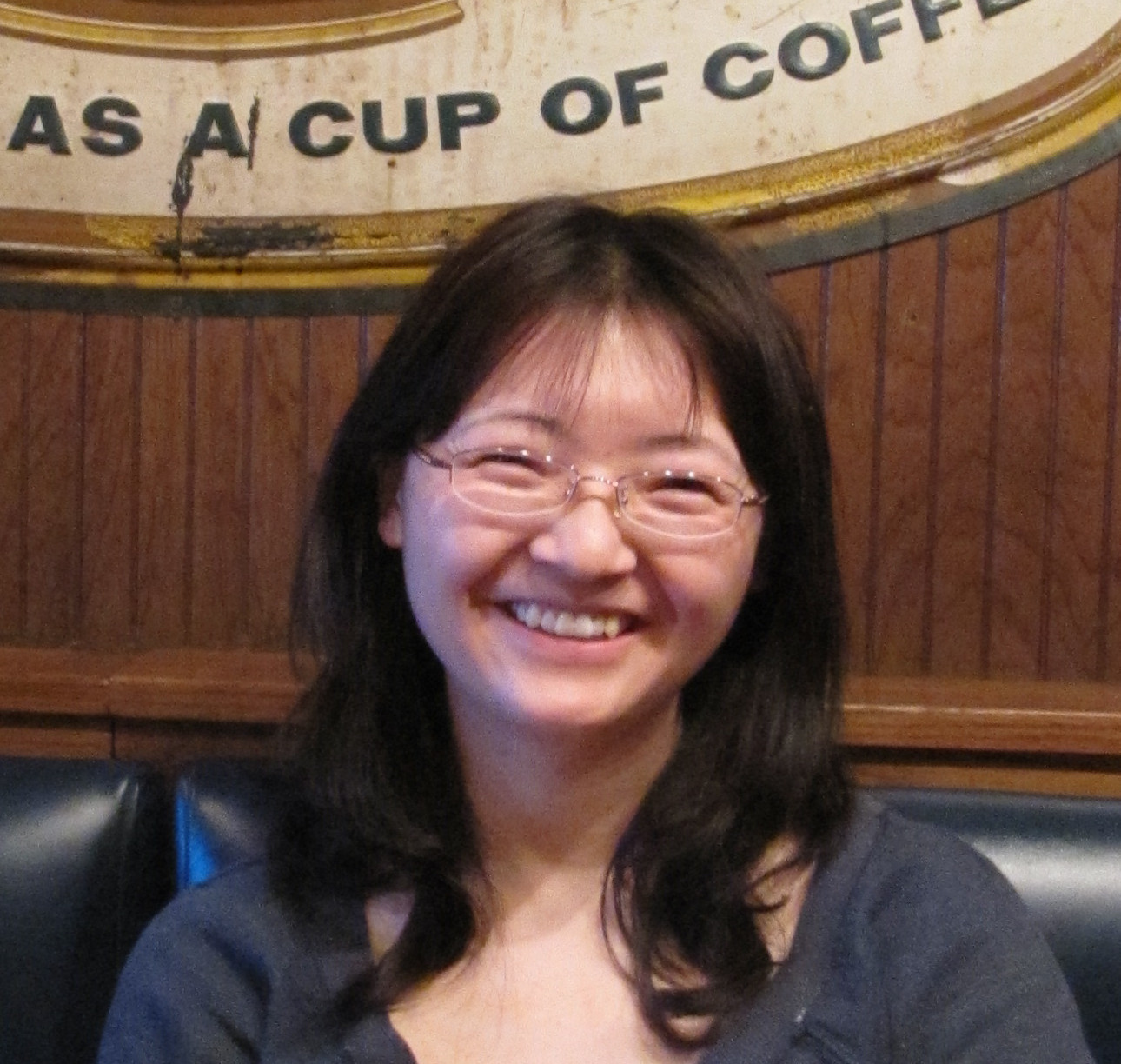 PhD Student Yuyan (Sara) Zhao Selected for Prestigious Dwornik Award
PhD Student Yuyan (Sara) Zhao Selected for Prestigious Dwornik Award 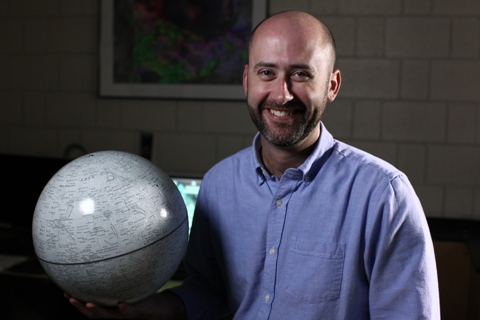 Professor Timothy Glotch to lead NASA funded research team
Professor Timothy Glotch to lead NASA funded research team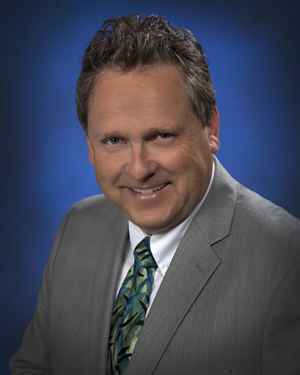 Professor Martin Schoonen named Chairman of the Environmental Sciences Department
at BNL
Professor Martin Schoonen named Chairman of the Environmental Sciences Department
at BNL Professors John Parise and Artem Oganov pursue Materials Genome Initiative
Professors John Parise and Artem Oganov pursue Materials Genome Initiative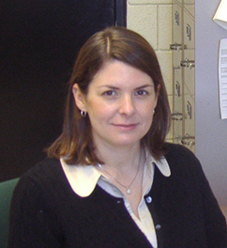 Professor Deanne Rogers finds evidence for past groundwater on Mars
Professor Deanne Rogers finds evidence for past groundwater on Mars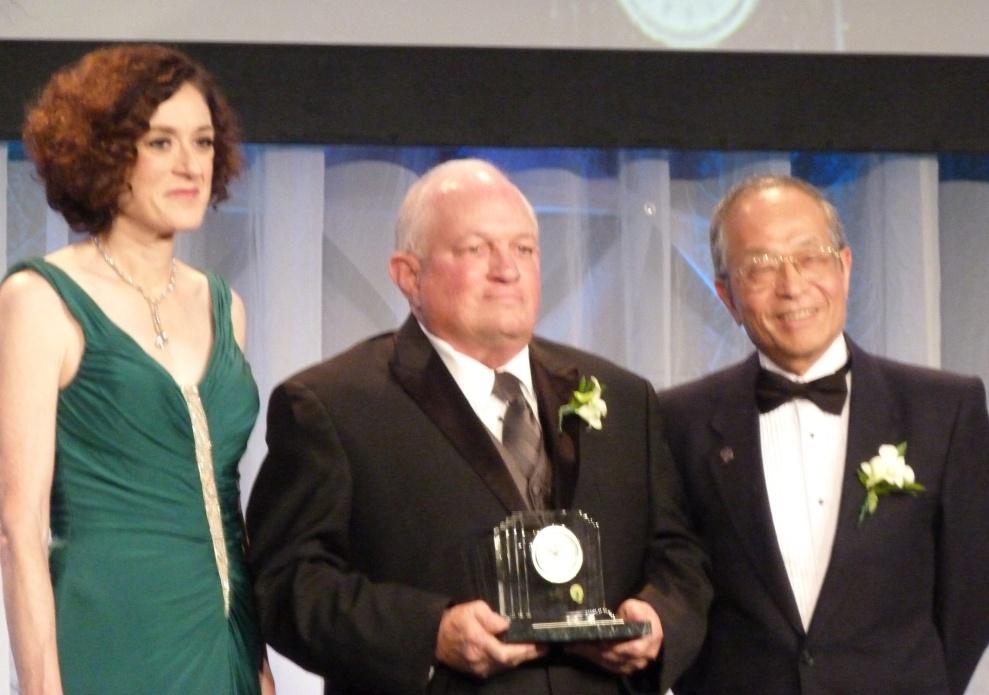 Professor Robert Liebermann accepts Edward A. Flinn Award
Professor Robert Liebermann accepts Edward A. Flinn Award Professor Scott McLennan selected for NASA’s Mars Science Laboratory Team
Professor Scott McLennan selected for NASA’s Mars Science Laboratory Team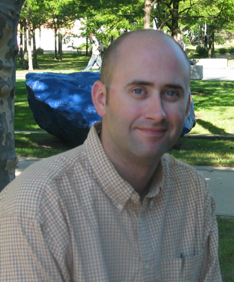 Professor Timothy Glotch receives NSF CAREER award
Professor Timothy Glotch receives NSF CAREER award 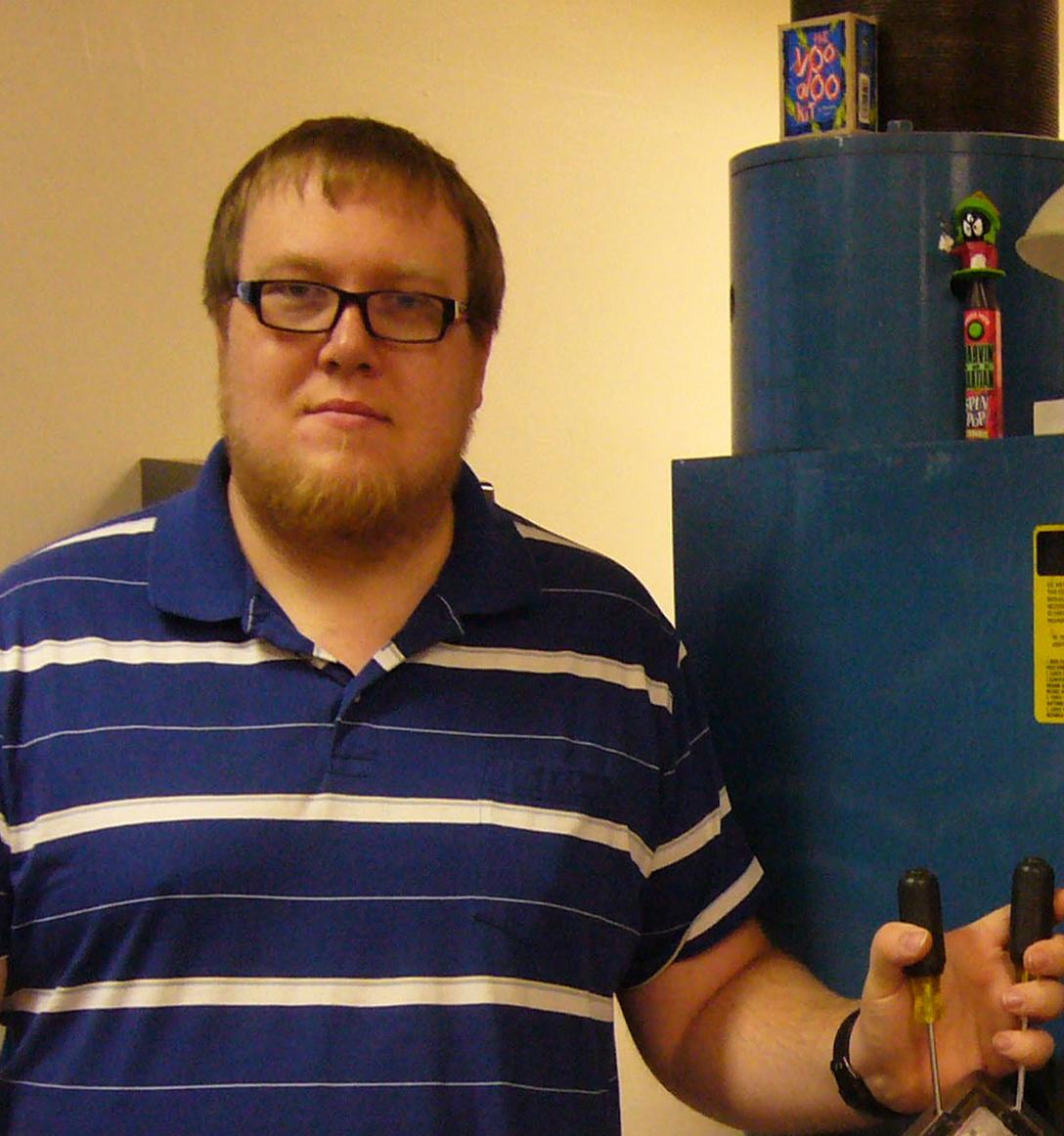 Geosciences PhD Francis McCubbin receives Presidential Early Career Award
Geosciences PhD Francis McCubbin receives Presidential Early Career Award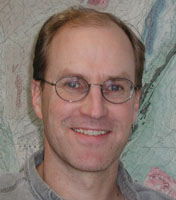
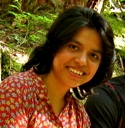 Geoscience Researchers Develop Numerical Model to Better Forecast Forces Behind Earthquakes
Geoscience Researchers Develop Numerical Model to Better Forecast Forces Behind Earthquakes 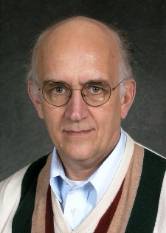 Professor Don Weidner selected to receive Inge Lehmann Medal for 2011
Professor Don Weidner selected to receive Inge Lehmann Medal for 2011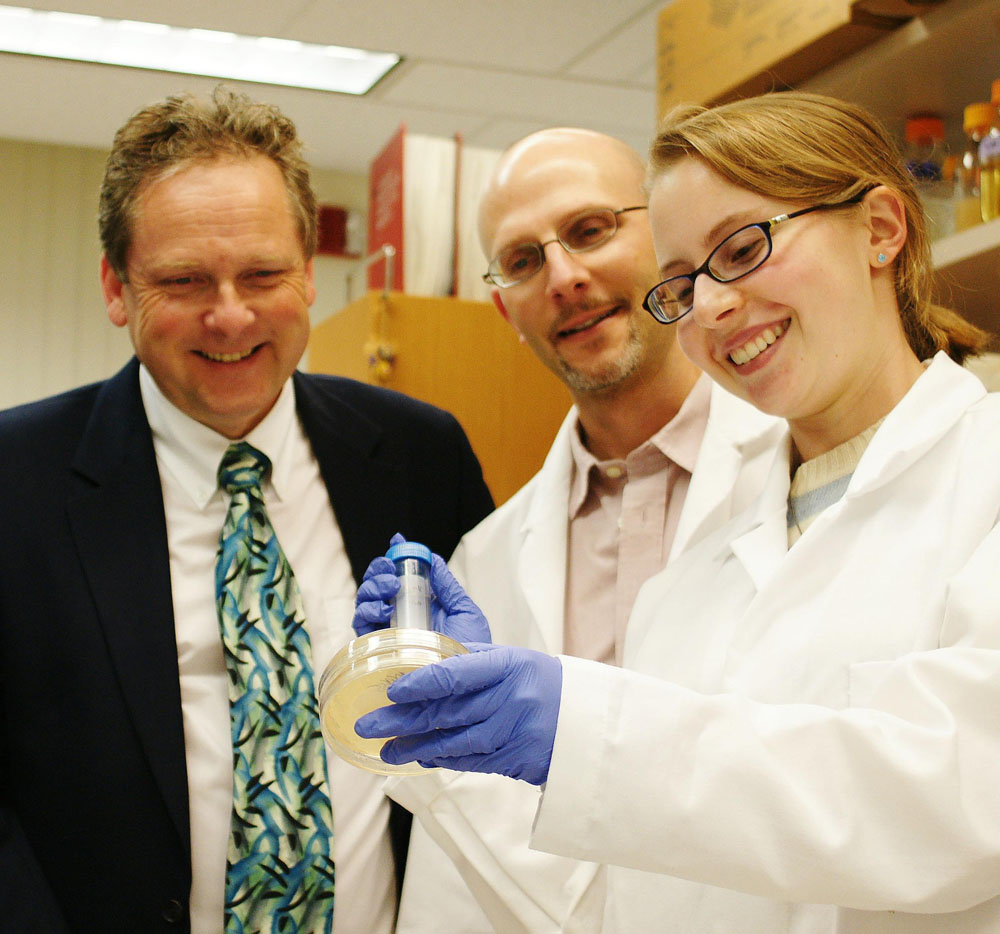 Geoscience researchers find that natural minerals disinfect drinking water
Geoscience researchers find that natural minerals disinfect drinking water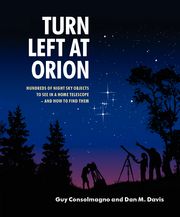 Professor Dan Davis Publishes 4th Edition of "Turn Left at Orion"
Professor Dan Davis Publishes 4th Edition of "Turn Left at Orion"
 Stony Brook PhD and Faculty Advisor Show that the Moon Isn't as Dry as Previously
Thought
Stony Brook PhD and Faculty Advisor Show that the Moon Isn't as Dry as Previously
Thought Jerrome Varriale, Geosciences Major, Named URECA Researcher of the Month
Jerrome Varriale, Geosciences Major, Named URECA Researcher of the Month Scott McLennan's book Planetary Crusts: Their Composition, Origin and Evolution receives
Best Reference Work Award
Scott McLennan's book Planetary Crusts: Their Composition, Origin and Evolution receives
Best Reference Work Award Tim Glotch Discovers New Type of Rock Surface on Moon
Tim Glotch Discovers New Type of Rock Surface on Moon John Parise Appointed Distinguished Professor
John Parise Appointed Distinguished Professor Katherine Schwarting, Undergraduate Geosciences Major, Named URECA Researcher of the
Month
Katherine Schwarting, Undergraduate Geosciences Major, Named URECA Researcher of the
Month